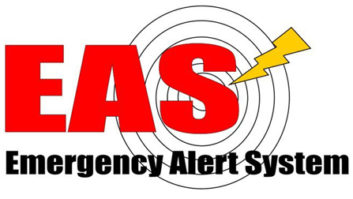The FCC’s proposal for more multilingual EAS announcements has been met with skepticism from stakeholders worried about the complications of implementing the technology to carry out the FCC’s wishes.
The proposal would allow use of pre-scripted alerts to make additional numbers of non-English speakers aware of public emergencies and weather warnings. But several groups are balking at the plan, saying the templates might work for alerts received by mobile devices (WEA), but recordings stored in broadcasters’ EAS equipment present further issues.
The commission’s plan would require broadcasters to transmit alerts in the primary language of their station’s content. Broadcasters would also have the option to provide additional alerts using pre-translated, pre-loaded scripts in a variety of languages.
The National Association of Broadcasters says it does not object to the proposed approach to enhance the accessibility of EAS for persons who do not speak English, but says the commission’s ambitiousness to roll out multilingual alerts creates confusion.
“The NPRM reads more like a Notice of Inquiry (NOI) as it provides only a bare construct of the FCC’s proposal, and leaves open many questions about how it would work in practice. NAB is concerned that implementing the proposal will be more complex and costly than the FCC suggests. to ensure that implementation is simple, economical, and flexible,” the advocacy group tells the commission.
The FCC proposes creating template alert scripts in the 13 most commonly spoken non-English languages in the U.S. The template scripts and audio files would be produced by the commission.
The non-English languages include Spanish, Chinese, Tagalog, Vietnamese, Arabic, French, Korean, Russian, Haitian Creole, German, Hindi, Portuguese and Italian. The FCC extended the reach of the Wireless Emergency Alert (WEA) system in similar fashion last year.
[Related: “FCC Pushes for Expansion of Multilingual Emergency Alerts“]
The NAB says the FCC proposal adds up to another unfunded EAS mandate. It asks the FCC to acknowledge that EAS is a government-imposed mandate that is “unfunded, and thus imposes direct costs on stations required to implement and maintain the system.”
NAB stresses the FCC must be cautious about imposing costs that are unjustified or unnecessary. “To that end, whatever plan the FCC ultimately adopts should be able to be executed through a routine software update, rather than require broadcasters to purchase additional hardware or a new EAS device,” NAB tells the commission.
In addition, the NAB says radio stations whose primary language is English but multicast HD radio channels in a non-English language could face complications, because such stations typically have a single EAS device that transmits one EAS alert across all of their channels at a time.
The advocacy group also questions the trade-off between using pre-canned EAS scripts and the amount of useful information that can be included in an EAS alert.
The NAB states: “There will be a trade-off under the FCC’s approach between providing access to non-English alerts and the content of alerts because EAS messages will have to be stripped down to the bare essentials for pre-translation into pre-canned scripts.”
If the new proposal is adopted, the NAB asks the FCC to clarify certain aspects to ensure the implementation is “simple, economical and flexible.”
Meanwhile, a response from National Weather Service expresses appreciation for the commission’s effort to expand EAS for multiple languages, but the government agency questions the ability of pre-scripted templates since they would lack a description of the threat or event, the location and population at risk, any guidance on what protective action to take and when people should begin taking the protective action.
“(NWS) does not use fixed alert templates for English language warnings for NWR (NOAA Weather Radio) and EAS and we do not envision fixed templates at any point in the near future because of the dynamic nature of NWS warnings and the need for localizations specific to events and locations,” NWS says in comments to the FCC.
The weather service says all of the weather alerts that have been implemented in the EAS to-date are time-sensitive, critical and thus issued to save lives and property. “As a national agency, it would be unfeasible for us to identify the messages most commonly used because our message types often vary depending on localities (e.g., hurricane alerts are not issued for states well inland),” NWS Meteorologist Timothy Schott wrote in the comments.
The Federal Emergency Management Agency (FEMA) also questions the FCC’s approach to reach non-English speaking populations with pre-scripted templates. The agency says “the use of pre-installed templates may not be an effective approach.”
FEMA says its concerns include the effectiveness of providing generic event warnings without including the five key types of content in the message that motivate people to respond in a timely manner.
Sage Alerting Systems says it is unwilling to offer an opinion on the need for multilingual EAS alerts, but it does offer multiple suggestions to the FCC about the practicality of using the template concept for EAS.
The provider of EAS equipment says EAS is not WEA. “Alerts issued via WEA are usually displayed on a device that provides its user the opportunity to immediately search for additional information, using a clickable link in the message itself, or by using other search tools enabled by the device,” the company says. In addition, WEA offers geofencing, it says.
Sage also believes that adding additional codes that specifically invoke the uses of templates is counterproductive for EAS. “The proposal for a parallel set of new event codes is not the best way to go,” it says.
Instead, Sage recommends the following: “Don’t use new template event codes, continue to use the old event codes. The template text and audio proposed by the commission, tied to the existing event codes, simply becomes an additional fallback if secondary languages are not provided by the AO in the original CAP message.”
If Sage’s suggestion to not use template codes is accepted, then only broadcasters that have non-English programming will need the template files, the company says.
Sage says its 3644 ENDEC would be able to store the template and audio files on an external flash drive connected to one of the USB ports on the back of the unit. It would be user installable. Cost of a user-provided USB drive is as little as $20, the company says.
Comments on the FCC’s NPRM (MB Docket 15-94) on multilingual EAS alerts can be read online at the FCC website.







